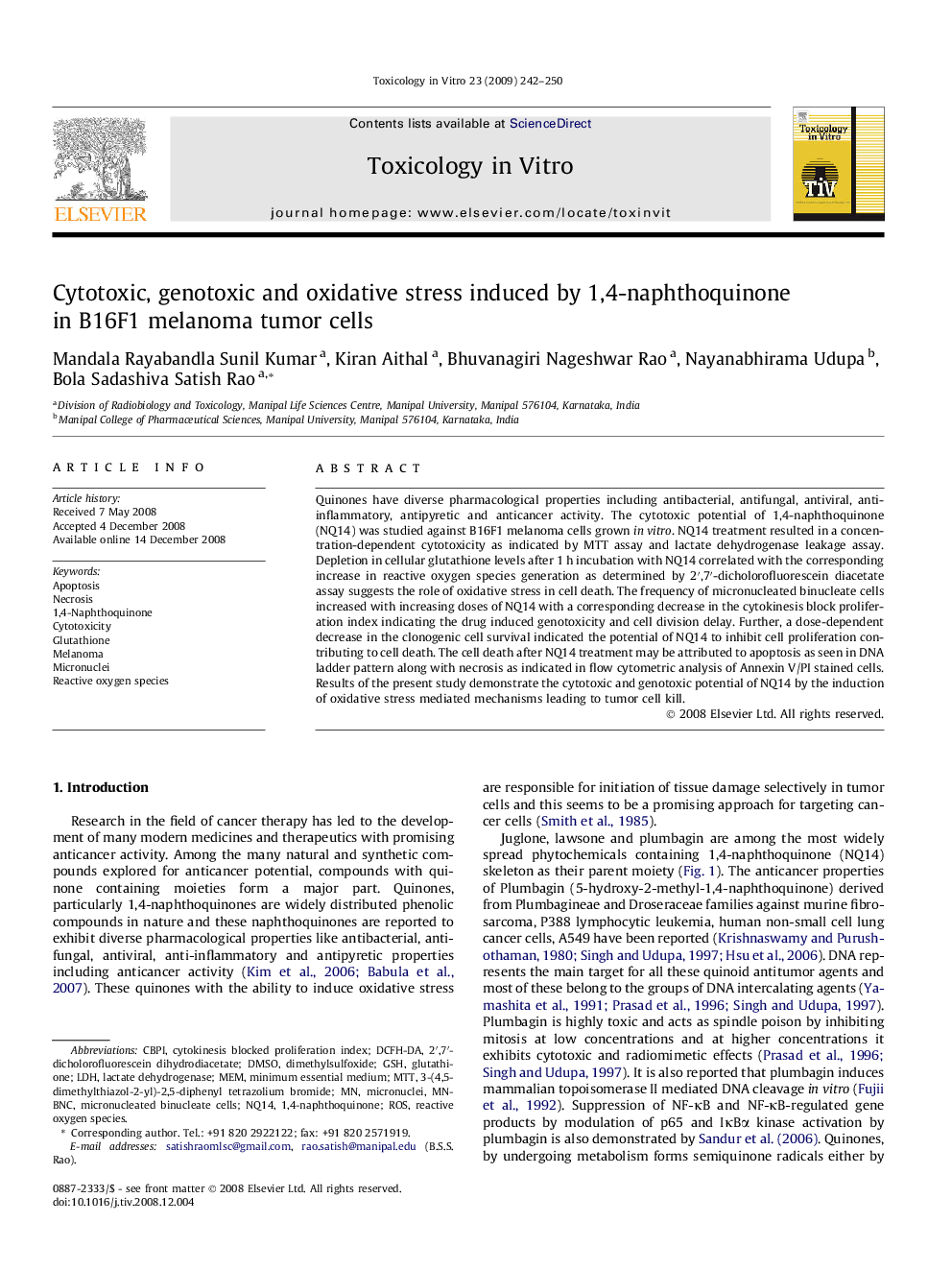| کد مقاله | کد نشریه | سال انتشار | مقاله انگلیسی | نسخه تمام متن |
|---|---|---|---|---|
| 2603127 | 1133809 | 2009 | 9 صفحه PDF | دانلود رایگان |

Quinones have diverse pharmacological properties including antibacterial, antifungal, antiviral, anti-inflammatory, antipyretic and anticancer activity. The cytotoxic potential of 1,4-naphthoquinone (NQ14) was studied against B16F1 melanoma cells grown in vitro. NQ14 treatment resulted in a concentration-dependent cytotoxicity as indicated by MTT assay and lactate dehydrogenase leakage assay. Depletion in cellular glutathione levels after 1 h incubation with NQ14 correlated with the corresponding increase in reactive oxygen species generation as determined by 2′,7′-dicholorofluorescein diacetate assay suggests the role of oxidative stress in cell death. The frequency of micronucleated binucleate cells increased with increasing doses of NQ14 with a corresponding decrease in the cytokinesis block proliferation index indicating the drug induced genotoxicity and cell division delay. Further, a dose-dependent decrease in the clonogenic cell survival indicated the potential of NQ14 to inhibit cell proliferation contributing to cell death. The cell death after NQ14 treatment may be attributed to apoptosis as seen in DNA ladder pattern along with necrosis as indicated in flow cytometric analysis of Annexin V/PI stained cells. Results of the present study demonstrate the cytotoxic and genotoxic potential of NQ14 by the induction of oxidative stress mediated mechanisms leading to tumor cell kill.
Journal: Toxicology in Vitro - Volume 23, Issue 2, March 2009, Pages 242–250